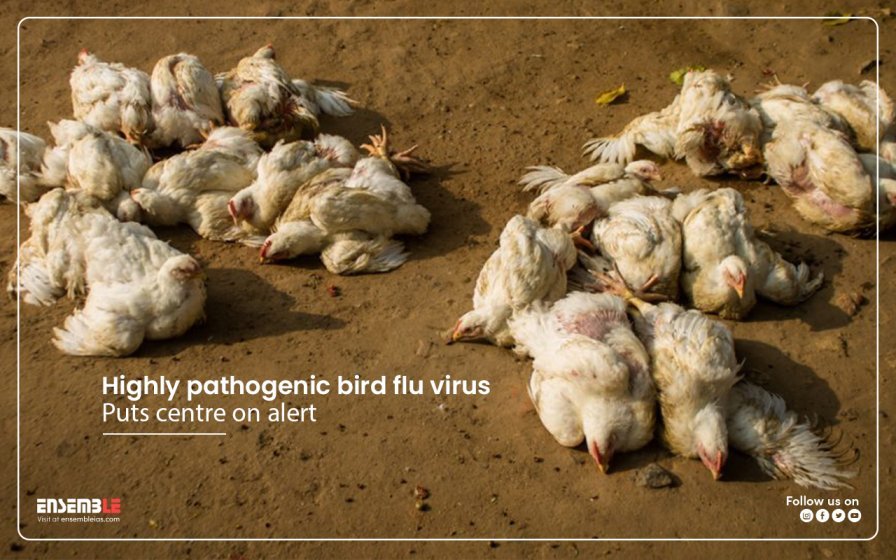Context- India is at “risk and vulnerable” to the outbreaks of avian influenza (H5N1), a worry compounded by the threat of mammalian transmission.
- H5N1, a highly pathogenic subtype of avian influenza, was detected by the ICAR-National Institute of High-Security Animal Disease, Bhopal in the samples received from the Government Poultry Farm at Bokaro, Jharkhand on February 17, 2023.
- India has now initiated the animal pandemic preparedness program.
- Chile reported its first human infection H5N1 virus.
About Avian influenza (H5N1) –
- Avian influenza is caused by influenza Type A virus (influenza A). Avian-origin influenza viruses are broadly categorized based on a combination of two groups of proteins on the surface of the influenza A virus: hemagglutinin or “H” proteins, of which there are 18 (H1-H18), and neuraminidase or “N” proteins, of which there are 11 (N1-N11). Many different combinations of
“H” and “N” proteins are possible. - Avian influenza viruses are classified into 2 groups based on genetic features and the severity of the disease.
- Low pathogenic – clinically minor infection
- High pathogenic – clinically higher infection
- Highly pathogenic bird flu or H5N1 virus occurs mainly in birds and can be high mortality in poultry and wild birds.
- United Nations Food and Agriculture Organization considers six countries to be endemic for the Asian H5N1 virus in poultry (Bangladesh, China, Egypt, India, Indonesia, and Vietnam).
- Migration of birds potentially exposing the domestic poultry.
- When the H5N1 virus infects humans, it affects the lower respiratory tract and consequently will cause viral pneumonia.
- Transmission through saliva, nasal secretion, feces, blood, and consumption of birds.
- Treatment – Oseltamivir (Tamiflu) and antibiotic treatment.





